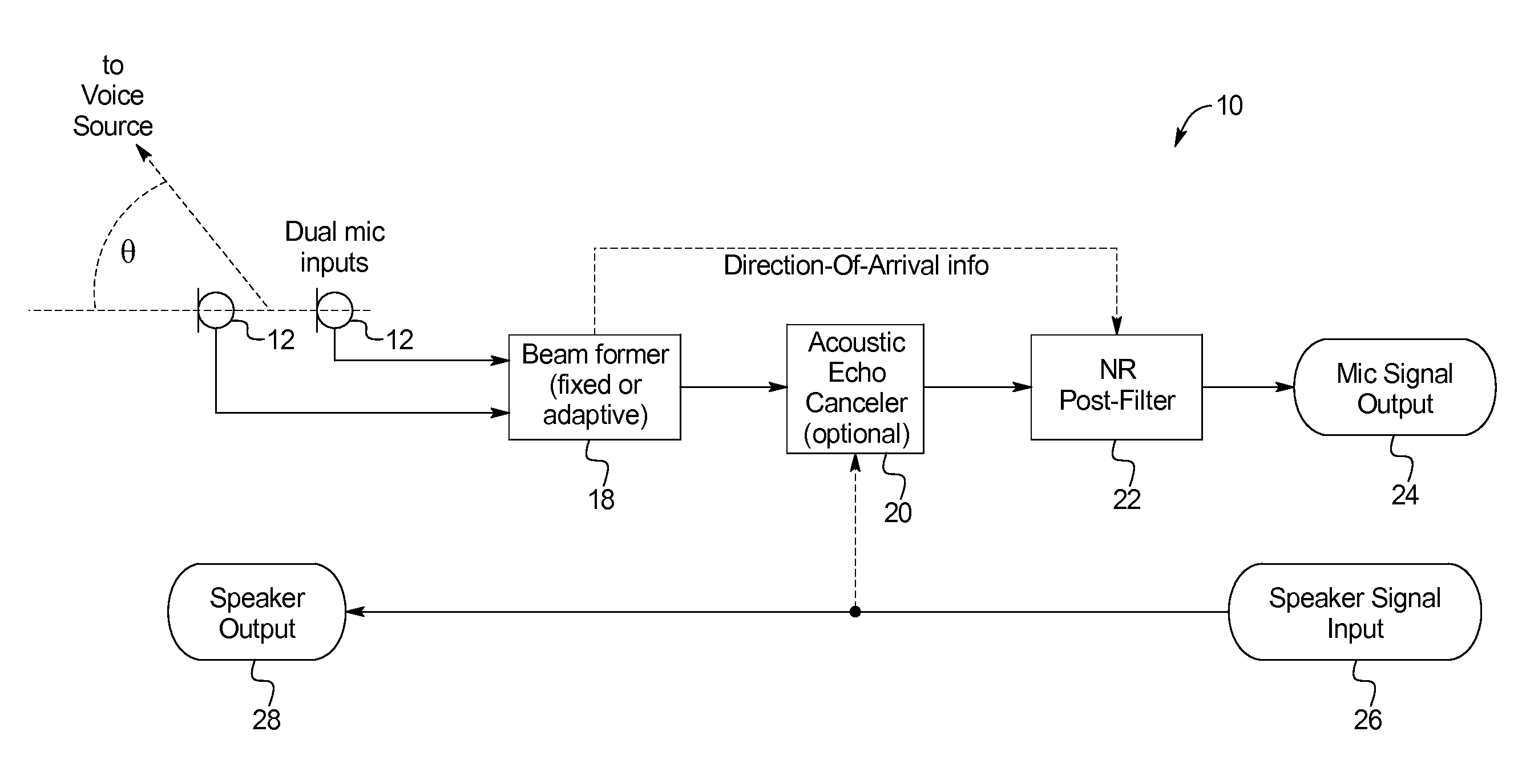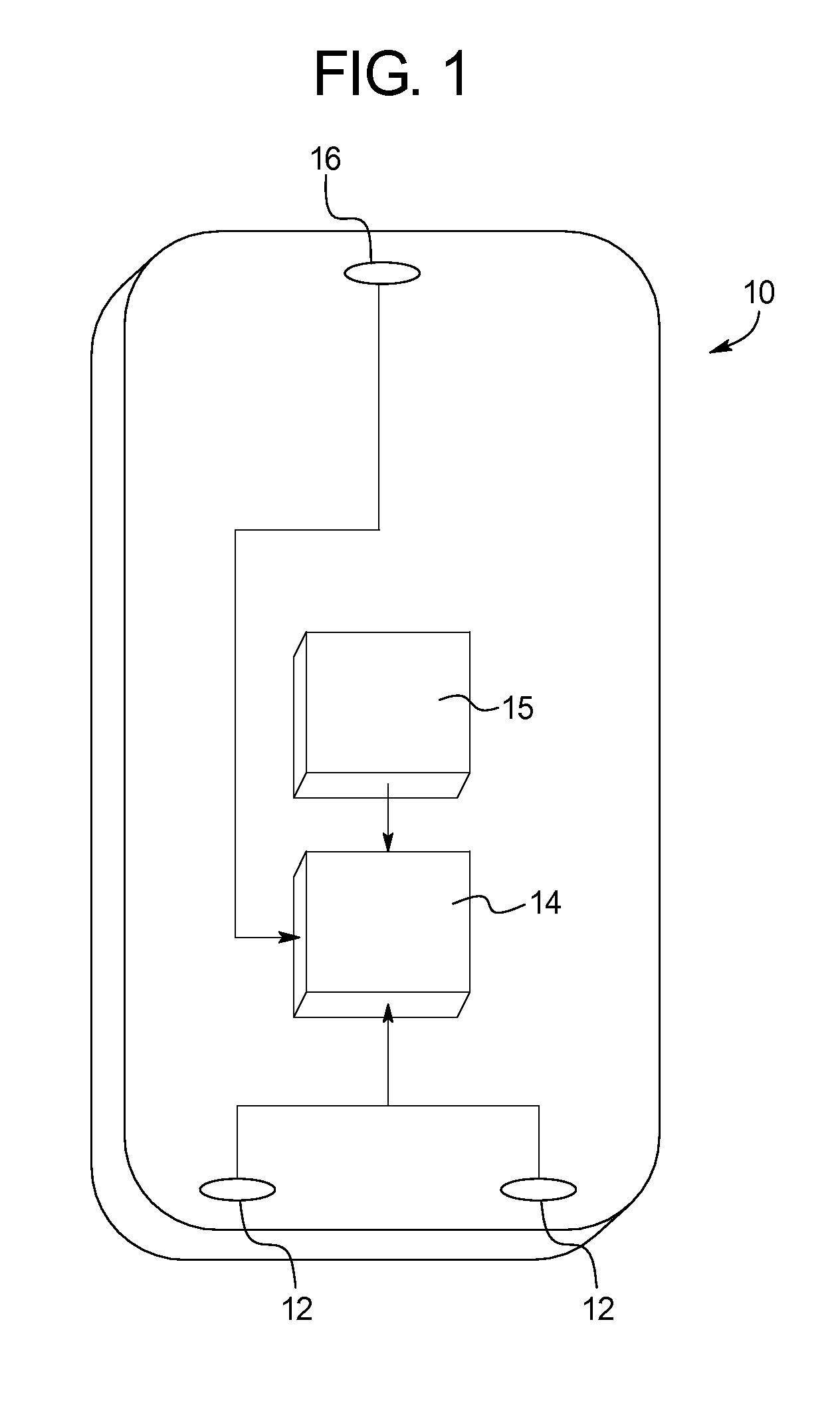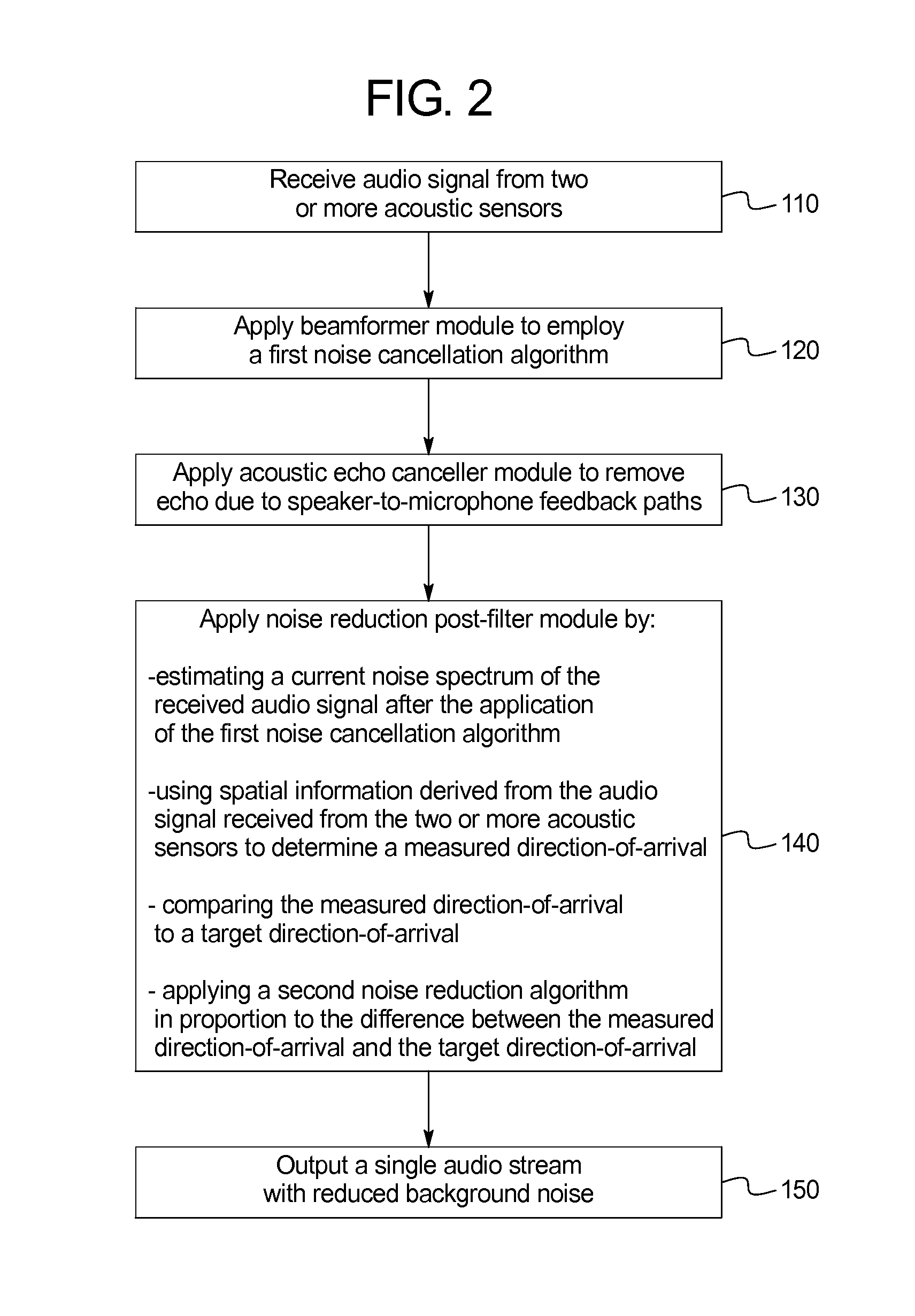Noise reduction using direction-of-arrival information
a direction-of-arrival and information technology, applied in the field of audio systems, can solve the problems of not being valid at some frequencies, and the use of a zelinski post-filter is not an ideal solution for noise reduction for multi-microphone mobile devices in real-world conditions, and achieve the effect of reducing background noise and optimizing noise reduction performan
- Summary
- Abstract
- Description
- Claims
- Application Information
AI Technical Summary
Benefits of technology
Problems solved by technology
Method used
Image
Examples
Embodiment Construction
[0041]FIG. 1 illustrates a preferred embodiment of an audio device 10 according to the present invention. As shown in FIG. 1, the device 10 includes two acoustic sensors 12, an audio processor 14, memory 15 coupled to the audio processor 14, and a speaker 16. In the example shown in FIG. 1, the device 10 is a smartphone and the acoustic sensors 12 are microphones. However, it is understood that the present invention is applicable to numerous types of audio devices 10, including smartphones, tablets, hand free car kits, etc., and that other types of acoustic sensors 12 may be implemented. It is further contemplated that various embodiments of the device 10 may incorporate a greater number of acoustic sensors 12.
[0042]The audio content captured by the acoustic sensors 12 is provided to the audio processor 14. The audio processor 14 applies noise suppression algorithms to audio content, as described further herein. The audio processor 14 may be any type of audio processor, including th...
PUM
 Login to View More
Login to View More Abstract
Description
Claims
Application Information
 Login to View More
Login to View More - R&D
- Intellectual Property
- Life Sciences
- Materials
- Tech Scout
- Unparalleled Data Quality
- Higher Quality Content
- 60% Fewer Hallucinations
Browse by: Latest US Patents, China's latest patents, Technical Efficacy Thesaurus, Application Domain, Technology Topic, Popular Technical Reports.
© 2025 PatSnap. All rights reserved.Legal|Privacy policy|Modern Slavery Act Transparency Statement|Sitemap|About US| Contact US: help@patsnap.com



